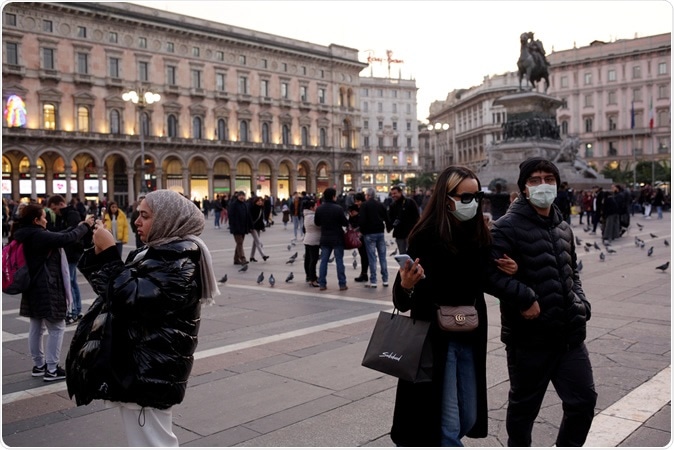Italy is in the spotlight amid the coronavirus outbreak that has taken the lives of more than 2,700 people and infected nearly 80,500 people worldwide. As the country races to contain the virus, neighboring European countries refuse to close their borders.
Over the past few days, Italy has seen a sharp increase in coronavirus disease (COVID-19) cases. The country has reported 323 confirmed cases, up from just 155 two days prior. Four more deaths were added to the toll, bringing the number to eleven.
The northern region of Lombardy reports six of the deaths, making it the epicenter of the current outbreak in the country. Tourist attractions, including Milan, Bergamo, and Como, are found in Lombardy, prompting health officials and the government to shut them down as a containment measure.

Italy is in the spotlight amid the coronavirus outbreak. Image Credit: Praszkiewicz / Shutterstock
Hospital mistake
The current outbreak in Italy has sparked questions about how the country handled the novel coronavirus, now rapidly spreading in the northern region. The Italian Prime Minister Giuseppe Conte tried to alleviate fears that the government has no control over the areas affected by the deadly virus. However, he admitted that a hospital, which was not named, had not followed proper protocol, leading to the largest outbreak outside of Asia.
Italian officials have identified Patient 1 in Italy, who was suspected to be mishandled by health care practitioners in a hospital in Codogno. The patient was called Mattia, a 38-year-old man who had been admitted to intensive care for respiratory problems.
The wife of the patient also tested positive for the virus and is currently admitted to the Sacco hospital in Mulan, but she is in a stable condition.
Still, the Italian government has not been able to identify Patient 0, a term given to someone who brought the coronavirus in the country, which is vital to prevent new clusters of cases.
Conte assured that the country’s health system is excellent, and they have implemented strict precautionary measures.
European countries remain borders open
Meanwhile, despite the vast spread of the coronavirus disease in Italy, other neighboring countries refuse to close borders. Health ministers from Italy’s neighbors who had a meeting in Rome with EU’s health commissioner said that closing borders would be an ineffective and disproportionate measure.
In Spain, hundreds of people were quarantined in their rooms at a hotel after an Italian tourist staying at the hotel was admitted to the hospital due to suspected coronavirus. Also, Croatia, Austria, and Switzerland all reported their first cases of coronavirus disease.
Croatia reported its first case in the Balkans region when a young man returned from Italy and had a positive coronavirus test result. The two new cases reported in Austria were also traced back to Italy. One of the patients was an Italian receptionist working at a hotel, which has since locked down.
France reported two new cases, both of whom had returned from Lombardy, Italy’s epicenter of the coronavirus outbreak.
Italian towns on lockdown
The Italian government has locked down several cities and towns in Italy in the hopes of containing the virus and prevent its spread across the country. Many towns in northern Italy has been quarantined, including Bertonico, Terranova dei Passerini, Castiglione d’Agga, Casalpuserlengo, Somaglia, Codogno, Fombio, Maleo, Vo’ Eugane, and San Fiorano.
Milan and Venice, which are the top tourist attractions in the country, remain open. Though there is no immediate threat of the virus, many schools, museums, and cinemas have been shut down temporarily to reduce the spread of the virus.
Major football games and several shows at the Milan Fashion Week are now suspended. The Venice Carnival is called off, and many of the cities museums are now closed.
There is no current travel advisory in place for those who want to go to Italy. Still, the health sector and the government urge people not to visit the affected regions, especially that the virus has been spreading, without a direct link to China, the outbreak’s origin.